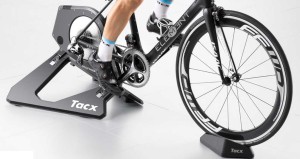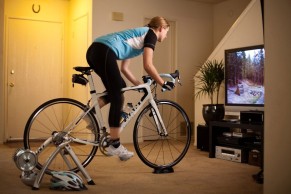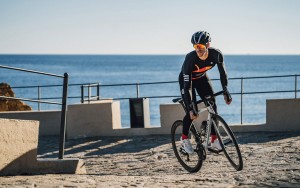How to make the most of short outings
Lack of time is often the main limitation for the progression of many cyclists. However, it is possible to carry out good training if we correctly plan these short workouts. A way of training in which intensity takes precedence over volume.

Get the most out of your short-duration workouts
For most people who ride a bike, following a traditional training plan is mission impossible. Work, family burdens and other daily chores greatly limit the time available for training. To this must be added the lack of light and bad weather that make things more difficult during the winter months.
Many even end up giving up going out thinking that the barely one hour of training they can have will hardly mean anything. A mistake since, if we are clear about what we want to train and we plan a session accordingly, an hour can go a long way, especially if we are consistent and that loose hour is repeated throughout the week.
RECOMENDADO

Complete list of the highest paid cyclists of 2025

How many calories are burned when cycling

What is heart rate variability and how does it affect the cyclist?

Change wheels if you want to transform your bike's behavior

What bike size do you need? Here's how to find out

How does age affect performance and recovery?
Obviously, the way to take advantage of such a short period is by prioritizing intensity over the volume parameter, that is, we are going to have to push hard during the outing. That is why, first of all, if you live in a city you should take into account the time it takes you to get to an open road where you can do the training without interference from traffic lights, roundabouts, excessive traffic, etc. If this time is excessive, more than we would use to warm up and cool down, it is preferable that we choose to do the training on the roller on which we can fully take advantage of the time.

Although you may think that these very short workouts will not be of any use, recent studies have made it clear that high-intensity training also has an impact on aerobic capacity, although we should always complement it with the usual long-distance rides that we will reserve for the weekends when we surely have more time available.
The qualities that these short workouts will mainly affect will be mainly the threshold, the VO2max in addition to the ability to maintain high rhythms constantly. Here are some training session suggestions in which it is essential, given the intensities at which you work, that you pay special attention to warming up during the first fifteen minutes.
Sprints
Short 30-second intervals are one of the most common workouts during the winter period and have a direct impact on our VO2max. After an intense warm-up, we will perform a variable number of starts at the top of what our legs give but making sure it is a pace that we can maintain for 30 seconds. We will rest for 30 seconds pedaling with great agility to properly clean the muscles and repeat.

The number of intervals will depend on our physical form and the time available. In addition, to make the training more tolerable, we can divide it into blocks, introducing a total rest of 5 minutes between series. A good example could be to do 2 blocks of 5 intervals of 30 seconds.
VO2max Intervals
Sprints have the advantage of being very affordable while we can perfectly adjust the duration of the session to the available time. However, if we want to increase the efficiency of VO2 work, we should increase the duration of the intervals to 3 to 5 minutes. A duration and an intensity where we are going to clearly feel the burning in the legs produced by the effort.
Here the pace will not be at the top as in sprints but agonizing and, of course, the number of intervals to be performed will be less. A good starting point could be to perform two blocks of 3 intervals of 3 minutes each with 2 minutes of recovery between them, adding 3 extra minutes of recovery between both blocks. A workout that will leave our legs nice and warm.
Pyramid
An interesting type of work that will allow us to alternate different rhythms and therefore work different qualities in the same training session. The essence of these sessions is to start with a long interval and at a sub-threshold intensity, then reduce the duration to increase the intensity, the next we will do the same and so on until we reach a minimum duration, also in terms of recovery time to finish the training in reverse, that is, with intervals again longer and of lower intensity.

A good example of this type of training could be 8 minutes, recover 2, 5 minutes followed by another two minutes of recovery, 2 minutes with 1:30 of recovery to finish the climb with 1 minute at the top followed by 1 minute of recovery and do the second part of the training in reverse, that is, 2 minutes, 5 minutes and conclude with the 8-minute interval with the incentive that here we will be dragging the fatigue accumulated by the most intense workouts.
Hills
If we do not want to be aware of series, times and intensities and we prefer to forget but without stopping doing an effective training a simpler way to face a short training is to choose a nearby climb that we take to ascend from 3 to 5 minutes and, simply, repeat it a certain number of times letting ourselves fall during the descent.
As in previous workouts, it is advisable, to make the training more tolerable, to divide the session into blocks, between which we will add two or three extra minutes of recovery that we can do by rolling gently at the foot of the climb.
Constant pace
Although short intervals are the most used when there is not much time, sessions at a constant pace will also be useful. In this case we are going to look for sub-threshold rhythms that in addition to improving this will allow us to acquire a high pedaling rhythm.

As in previous examples, we can divide the work into two blocks, for example the usual 2x20 minutes with 5 minutes of recovery in between or do it all at once. Here it is important that we choose a terrain in which we can maintain the chosen pace as constantly as possible and mentalize that so much time at a high pace can be a significant torture, more psychological than for the legs that, if the pace is correctly chosen, should be able to withstand the effort without problem.